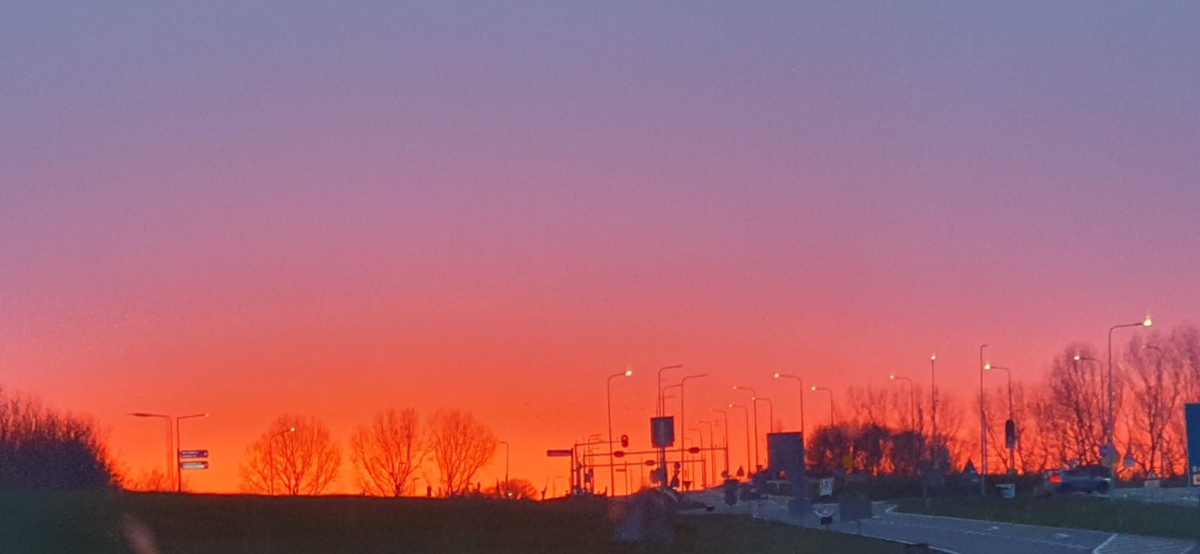
The dust caused amazing sunsets, witnessed all over the Netherlands and leading to much media coverage.
Dust models, such as the Copernicus model which can be viewed through the website Windy.com, can forecast the trajectory of dust events with great precision. In early April 2024, such an event was forecasted to happen and pass along Western Europe:
Why do we care?
For a period of three years, Saharan dust travelling across the Atlantic Ocean from northwest Africa towards the Americas was studied with a set of instruments floating on the ocean surface and below the ocean surface. This study resulted in many new insights on the relationships between dust deposition and the response of phytoplankton in the ocean. Many of these new findings you can find on the NIOZ dust website.
Another lessen learnt is that we don't understand many things of long-distance transport of mineral dust particles through the air. These open questions deal with:
- the energy balance of dust particles (reflection of energy back into space leads to cooling versus absorption of energy leads to warming of the atmosphere),
- the fertilisation potential of dust (composition, availability of nutrients and metals),
- the ballasting potential of dust (what is the role of dust particles on export of organic matter out of the photic zone)
All these processes relate to dust-particle properties such as particle size and particle composition.
Saharan dust sometimes is blown North as well, but by the time it has reached the Netherlands, the dust particles are very fine grained and can basically only deposit when they are washed out of the atmosphere with rain. Most often, dust is then seen on smooth surfaces such as cars:
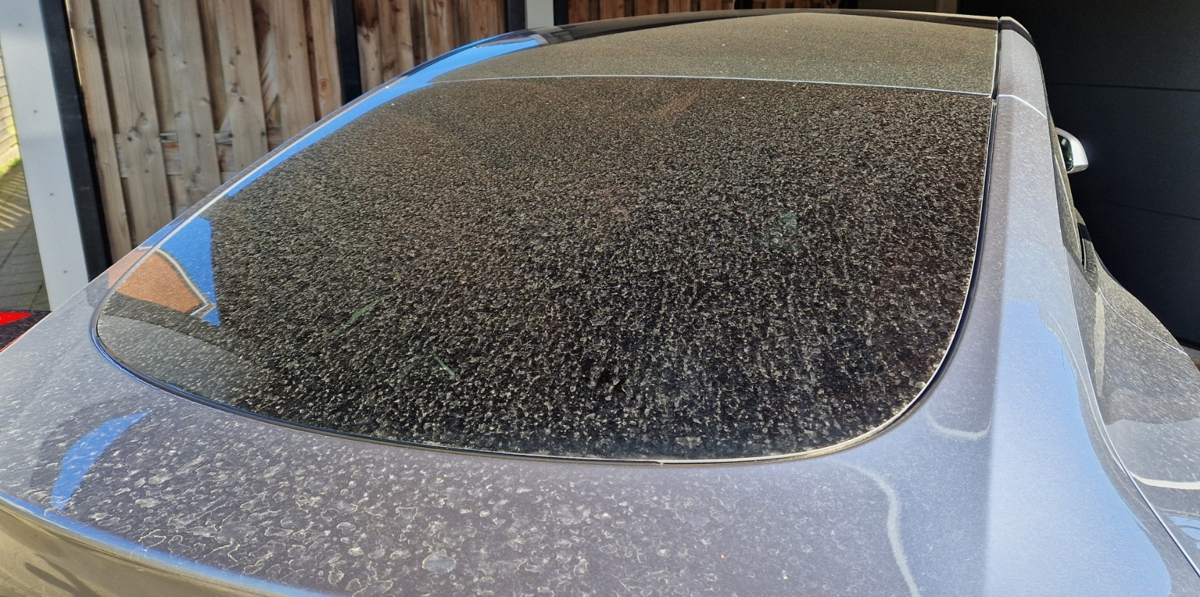
....and solar panels; here one can even see the traces of water that washed the dust down the slightly tilted panels:
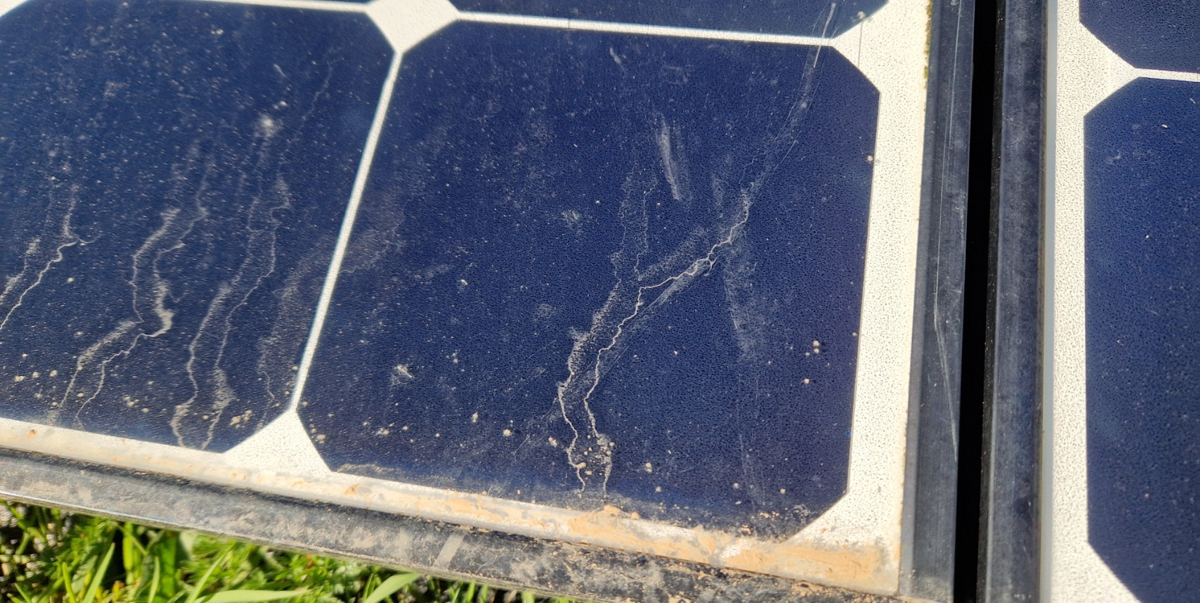
Dust outbreaks such as the one in early April 2024 offer the unique opportunity to study the relatively simple properties of particle size and composition and their changes along the downwind transport path. Sampling such events is therefore required on as large as possible temporal and spatial scales.
At NIOZ, the technical staff is very experienced in designing and constructing sophisticated sampling equipment. Below one can see a rain-sensor controlled wet-dust collector, which is used on autonomous dust-collecting buoys that are floating in the eastern subtropical North Atlantic Ocean. However, when something can be done simply, why not do them simply; a plastic crate that is high enough to catch dust that is washed down by rain (does not splash out) and also high enough to prevent dust being blown out again, suffices as a sampling tool as well!
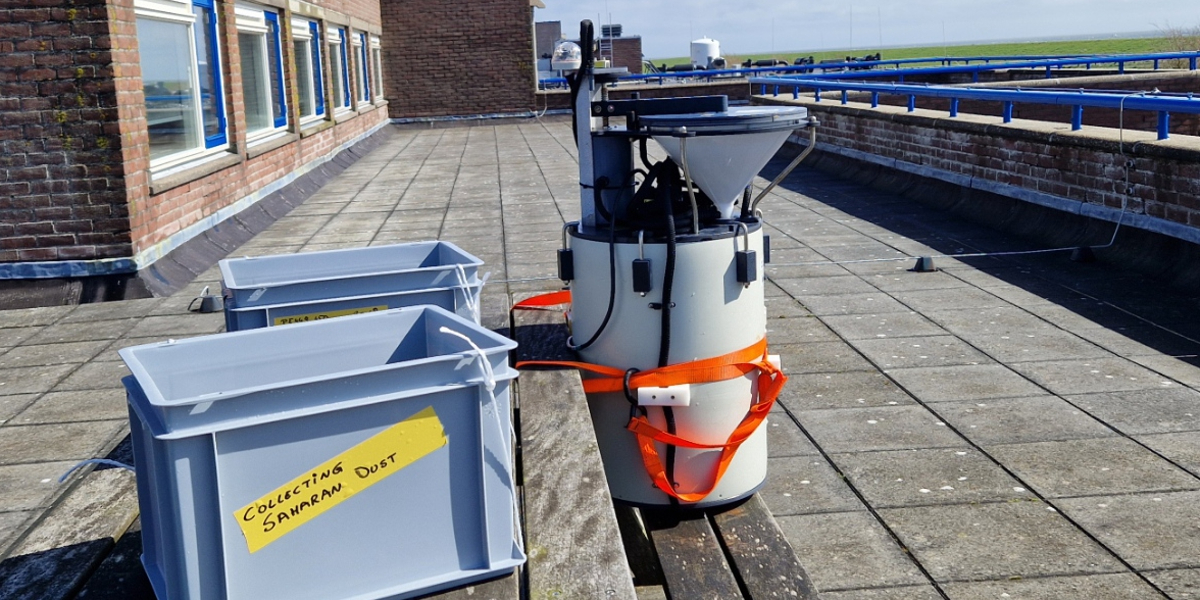
If a plastic crate can do the trick, so can an oven dish....
Soon enough a citizen-science initiative was started; a call was made through social media to try and sample the dust cloud that would pass over the island of Texel on the evening of Saturday 6 to Sunday 7 April. The response was fantastic and when the local newspaper picked up and promoted the call, soon it spread across the entire country of the Netherlands; many oven dishes were put on tables, roofs and obstacles to collect Saharan dust.
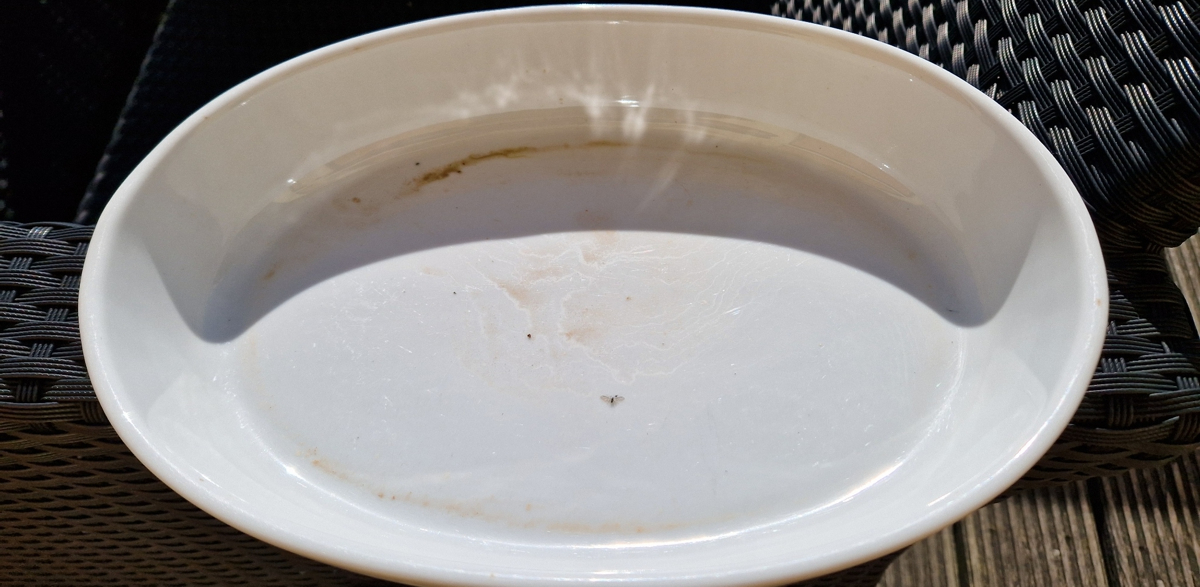
We are now collecting and processing these samples, and together with colleagues all around Europe --who also turned this event into a citizen-science project-- hope to characterise the down-wind changes in the dust particles and relate them to the ambient meteorological conditions.
to be continued !!
#welstoffignietsaai